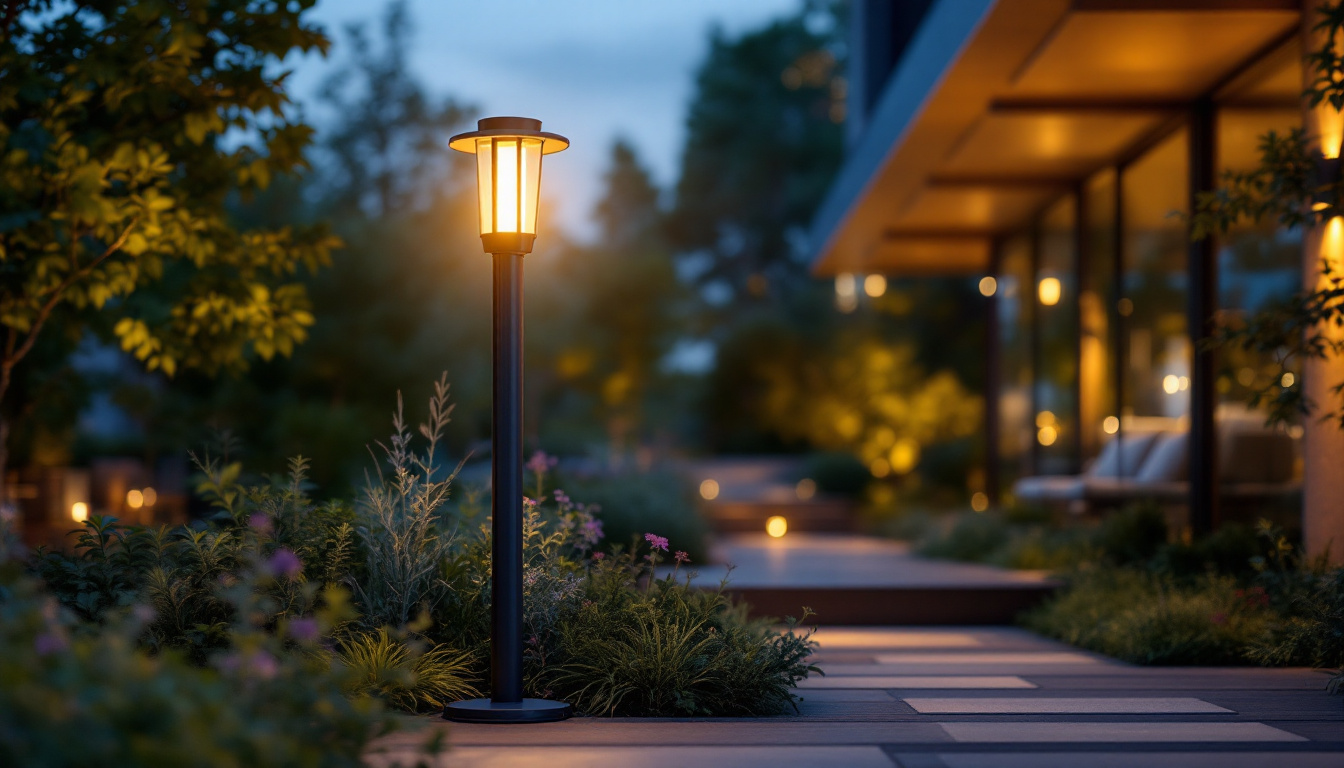
In the realm of outdoor lighting, motion flood lights have gained significant popularity among homeowners and businesses alike. These fixtures not only enhance security but also provide convenience and energy efficiency. For lighting contractors, understanding the best strategies for selecting, installing, and maintaining outdoor motion flood lights is crucial to delivering exceptional service and ensuring customer satisfaction. This article delves into the top strategies that lighting contractors can employ to maximize the effectiveness of outdoor motion flood lights.
Before diving into strategies, it’s essential to grasp what motion flood lights are and how they function. These lights are designed to illuminate an area when they detect movement, making them ideal for driveways, backyards, and commercial properties. Typically equipped with sensors, they can be triggered by various types of motion, providing both security and convenience. The technology behind these lights has evolved significantly, offering features such as adjustable sensitivity and customizable light duration, which can be tailored to meet the specific needs of any environment.
Motion flood lights come with different types of sensors, each with unique features. Passive infrared (PIR) sensors detect heat emitted by objects, making them ideal for detecting human presence. Ultrasonic sensors, on the other hand, use sound waves to identify movement, which can be more sensitive but may also lead to false triggers from animals or other moving objects. There are also dual-tech sensors that combine both PIR and ultrasonic technologies, providing a more reliable detection system by minimizing false alarms while ensuring that genuine movements are captured effectively.
Understanding these differences allows contractors to recommend the most suitable type of sensor based on the specific needs of their clients. For instance, a residential setting may benefit more from PIR sensors, while larger commercial spaces might require ultrasonic sensors for broader coverage. Moreover, the placement of these sensors is crucial; positioning them at strategic angles can maximize their effectiveness, ensuring that the entire area is monitored without blind spots. This meticulous approach not only enhances security but also optimizes the lighting experience for users.
Motion flood lights offer numerous advantages that lighting contractors should emphasize to clients. Firstly, they enhance security by illuminating dark areas when movement is detected, deterring potential intruders. Secondly, they contribute to energy savings, as they only activate when needed, reducing unnecessary electricity consumption. This energy efficiency is particularly appealing in today’s eco-conscious market, where clients are increasingly looking for sustainable solutions that lower their carbon footprint.
Additionally, these lights can enhance the aesthetic appeal of a property. By strategically placing motion flood lights, contractors can highlight architectural features or landscaping, creating a welcoming atmosphere while ensuring safety. The versatility of motion flood lights allows them to be used in various settings, from illuminating pathways and entrances to accentuating outdoor living spaces like patios and gardens. This dual functionality not only improves safety but also elevates the overall ambiance of the property, making it more inviting for guests and residents alike. Furthermore, advancements in LED technology have made it possible for these lights to emit brighter, more vibrant illumination while consuming less energy, further enhancing their appeal to environmentally conscious consumers.
Selecting the right motion flood lights for a project involves several considerations. Lighting contractors must assess the specific requirements of each job to ensure optimal performance and satisfaction.
The first step in selecting motion flood lights is to conduct a thorough assessment of the client’s needs. This includes understanding the purpose of the lighting—whether for security, aesthetic enhancement, or both. Contractors should engage in detailed discussions with clients to gauge their preferences, budget, and any specific concerns they may have.
Moreover, evaluating the area where the lights will be installed is crucial. Factors such as the size of the space, the presence of obstacles, and the typical foot traffic can influence the choice of fixtures and sensor types. For instance, a well-lit pathway may require different specifications than a secluded backyard. Additionally, understanding the client’s lifestyle and usage patterns can help in recommending features like adjustable sensitivity settings or timers, which can enhance convenience and energy efficiency.
Brightness is a critical factor when selecting motion flood lights. The lumen output should align with the intended use of the area. For instance, a residential driveway may require less intensity compared to a commercial parking lot. Contractors should educate clients about the importance of appropriate brightness levels to ensure safety without causing glare or discomfort.
Coverage is another essential consideration. Motion flood lights come with various beam angles, which dictate how wide an area the light will cover. For expansive areas, a wider beam angle may be necessary, while smaller spaces can benefit from focused lighting. Contractors should recommend fixtures that provide adequate coverage based on the specific layout of the property. Additionally, it is beneficial to consider the placement of the fixtures; mounting them at optimal heights can significantly enhance their effectiveness. This may involve strategic positioning to minimize shadows and maximize visibility, ensuring that all critical areas are illuminated without leaving dark spots that could compromise safety.
The placement of motion flood lights significantly impacts their effectiveness. Contractors should aim to install lights at a height that maximizes detection while minimizing the risk of tampering. Typically, mounting lights between 8 to 12 feet above the ground provides a good balance between visibility and security.
Additionally, positioning the lights to cover entry points, pathways, and other vulnerable areas is crucial. Contractors should consider the natural movement patterns of individuals in the area to ensure that the lights activate appropriately when needed.
Electrical wiring is a critical aspect of installation that should not be overlooked. Contractors must ensure that the wiring is compliant with local codes and standards. Using weather-resistant materials and ensuring proper grounding can prevent issues related to moisture and electrical failures.
Moreover, it’s essential to test the installation before completing the project. This includes checking the sensor’s responsiveness, ensuring that the lights activate at the desired distance, and confirming that the coverage area is adequately illuminated.
LED technology has revolutionized outdoor lighting, offering significant energy savings compared to traditional incandescent or halogen bulbs. LED motion flood lights consume less power while providing the same, if not better, brightness levels. Additionally, they have a longer lifespan, reducing the frequency of replacements and associated costs.
Outdoor motion flood lights are a valuable addition to any property, providing security, convenience, and energy efficiency. For lighting contractors, understanding the intricacies of selecting, installing, and maintaining these fixtures is essential for delivering exceptional service and ensuring client satisfaction. By employing the strategies outlined in this article, contractors can enhance their expertise and build lasting relationships with their clients.
From assessing client needs to recommending energy-efficient solutions, the role of a lighting contractor extends beyond mere installation. It encompasses a commitment to quality, safety, and innovation in outdoor lighting. As the demand for motion flood lights continues to grow, contractors who embrace these strategies will be well-positioned to thrive in a competitive market.
Ready to elevate your lighting projects with the best in outdoor motion flood lights? At LumenWholesale, we provide lighting contractors with the highest quality, spec-grade lighting solutions at prices that can’t be beaten. Say goodbye to unnecessary markups and hello to a vast selection of industry-standard lighting that promises reliability and high performance for every project. With the added benefits of hassle-free bulk buying and free shipping, LumenWholesale is your go-to source for premium lighting at the best value. Don’t compromise on quality or price. Discover wholesale lighting at the best value today and bring your lighting projects to life with confidence and ease.

Discover the key challenges lighting contractors face when implementing LED solutions in warehouses.

Discover how surface mount light fixtures are revolutionizing the lighting industry, offering contractors a competitive edge with their ease of installation, versatility, and modern design.

Discover how post lamps are transforming modern lighting solutions with their blend of classic charm and innovative technology.

Discover the ultimate guide for lighting contractors on selecting the perfect LED lights.